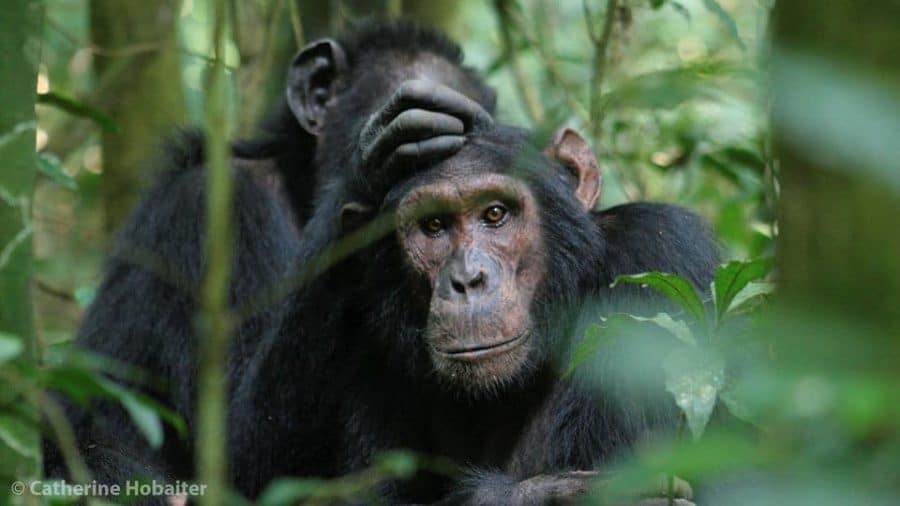Psychologists from Durham University, UK have found in their study that bonobos produce a variety of signals including “baby-like” signals to strategically display distress when they are attacked by other bonobos.
The researchers carried out this study on two bonobo groups comprising over 40 bonobos at the Lola ya Bonobo Sanctuary in Kinshasa (Democratic Republic of Congo), the world’s only bonobo sanctuary.
The researchers examined how bonobo victims communicate about their distress after a fight, and whether these signals affect the responses of bonobo bystanders. They found that when the bonobos produce certain types of signals of their emotional distress, they have higher chances of being comforted by other bonobos watching. These signals resemble those typically used by baby bonobos such as pouting, whimpering and showing tantrums.
The adult bonobos usually stop signalling their distress when they get supported by others, while immature bonobos still continue afterwards.
The study reveals that adult bonobos are also less likely to be re-attacked by their former opponent when they display these “baby-like” signals following a conflict.
The researchers further discovered that bonobos are sensitive to their audience as such they produce more signals in general if more bonobos in the social audience are nearby, suggesting bonobos adapt their signals depending on who is nearby.
For a long time, it was thought that great apes had no control over their emotional expressions. The study findings suggest that emotion expressions are not mere read-outs of internal states but can be used in flexible and strategic ways to purse social goals, even in emotionally-charged contexts.
The full research has been published in the journal Philosophical Transactions B.
Lead author of the study, Dr Raphaela Heesen of Durham University, said: “Bonobos are highly sensitive to social situations and who is surrounding them. They have rich emotional lives and are able to communicate their emotional states in flexible ways to influence their group members.
“In using specifically “baby-like” signals, bonobos might increase their chances to be consoled by others and alleviate their own stress level following aggressive attacks. Our research shows that emotions and their expression do not only play a role in the regulation of social life in our own species, but also in our closest living primate relatives”
Senior author of the study, Dr Zanna Clay of Durham University, said: “The act of comforting a victim in distress has long been considered a form of empathy that is initiated by the bystander. However, our study reveals that the victim’s own signals may be used strategically to shaping these responses.
“By producing signals that make them seem more like infants, bonobo victims can promote the chances of receiving comfort from others. This highlights the important role that communication plays in shaping empathic responding.”
The researchers thus emphasise that bonobos have flexible ways of communicating their emotions, just like humans.
The study sheds light on understanding the emotional life of bonobos with a focus on the potential evolutionary origins of emotion communication.
This project was conducted by members of the Comparative and Cross-Cultural Development Lab led by Dr Zanna Clay.
It has been funded by the UKRI Economic and Social Research Council Open Research Area Grant, the Living Links Center of the Yerkes National Primate Research Center and Emory University’s College of Arts and Sciences.


